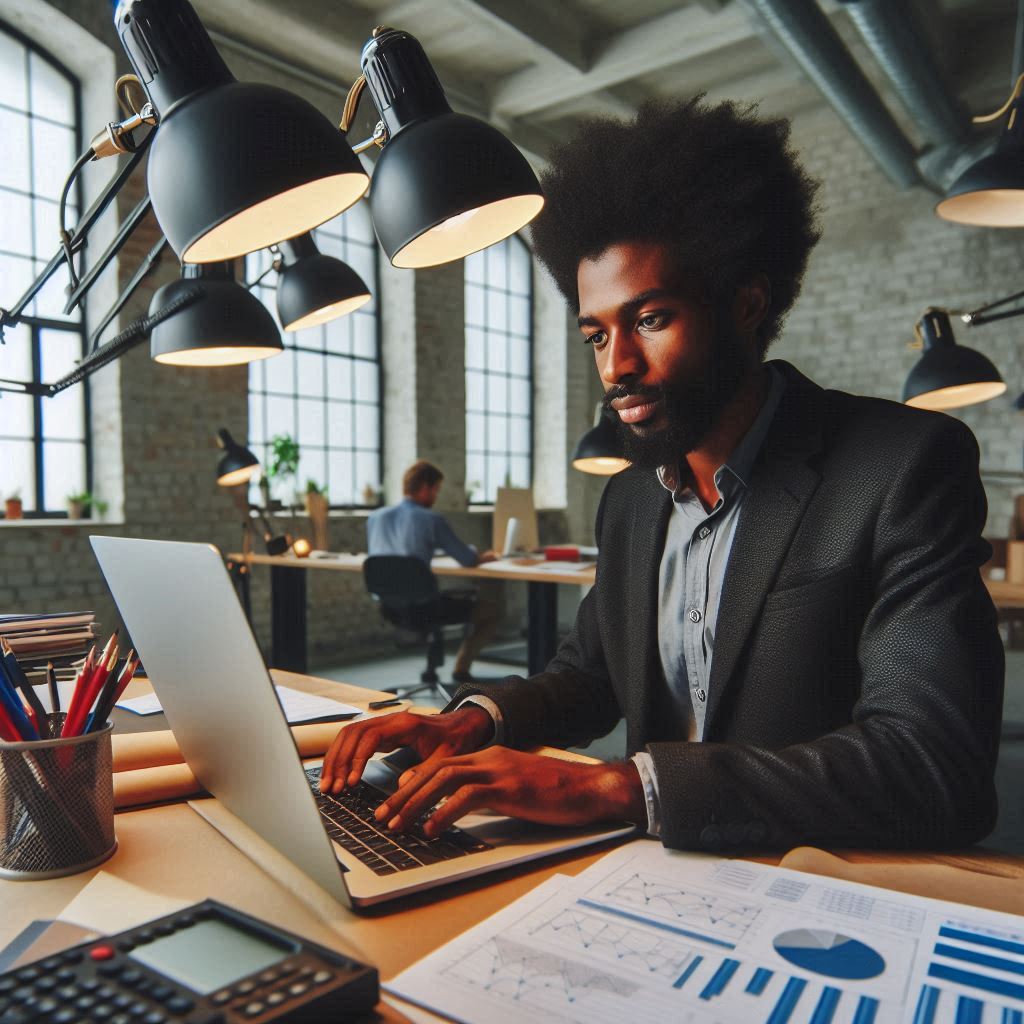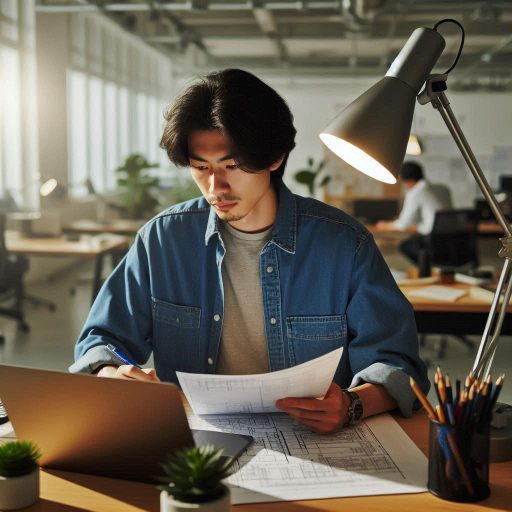Introduction
Lighting plays a crucial role in setting the mood and atmosphere for any event.
It has the power to transform a space and create a memorable experience for attendees.
Lighting designers are the creative minds behind the mesmerizing light displays that captivate and enchant guests.
Their expertise in using various lighting techniques and equipment can elevate the overall ambiance of an event.
The right lighting design can enhance the decor, highlight key elements, and evoke emotions that leave a lasting impression on guests.
Lighting designers work closely with event planners to understand the theme, purpose, and audience of the event, translating that vision into a visually stunning reality.
Their attention to detail and innovative approach ensure that every aspect of the event is illuminated to perfection, creating a unique and immersive experience for all attendees.
By harnessing the power of light, lighting designers not only illuminate space but also evoke feelings, create focal points, and guide the flow of the event.
Their expertise goes beyond just lighting fixtures; they also consider factors like color temperature, intensity.
Positioning to create a cohesive and impactful lighting design that complements the overall event theme.
In essence, lighting designers are essential collaborators in event planning, as they have the ability to transform ordinary spaces into extraordinary experiences through the art of illumination.
What is a Lighting Designer?
Definition of a Lighting Designer
A lighting designer is a professional responsible for creating the lighting scheme for various environments, including events, architectural spaces, or theatrical productions.
Their expertise ensures that light enhances the visual experience while serving functional purposes like safety, mood setting, and visibility.
By selecting the right lighting fixtures, colors, and intensity, a lighting designer shapes how an environment is perceived.
They combine technical knowledge with creativity to create a balanced, effective lighting solution that aligns with the space’s or event’s goals.
Overview of Their Responsibilities in Event Planning
In event planning, a lighting designer‘s role is pivotal to creating the desired atmosphere.
They collaborate with event organizers, set designers, and technical teams to develop a lighting plan that complements the theme, decor, and overall vision.
Their responsibilities include selecting appropriate lighting fixtures, designing light placement, programming effects, and ensuring the safety and functionality of the lighting equipment.
By considering the event‘s flow and audience experience, they tailor the lighting to emphasize key moments, such as speeches, performances, or stage transitions.
Sustainable practices are becoming increasingly important in event lighting, as energy efficiency and environmental impact are prioritized.
A forward-thinking lighting designer incorporates eco-friendly technologies, like LEDs and automated systems, to reduce power consumption without compromising the event’s ambiance.
They also take into account local regulations, power availability, and the overall carbon footprint of the lighting setup.
Lighting designers not only enhance the visual appeal of events but also help lower the environmental impact by embracing sustainable practices.
Read: Freelance vs. In-House Costume Design Jobs
The Impact of Lighting on Event Atmosphere
How Lighting Can Set the Mood for an Event
Lighting plays a pivotal role in shaping the mood of any event.
It can instantly alter the atmosphere, evoking different emotions and reactions from attendees.
The right lighting can make an event feel cozy, vibrant, elegant, or even mysterious, depending on the desired effect.
For instance, dim, soft lighting is ideal for an intimate gathering, creating a calm and relaxed vibe.
On the other hand, bright, bold lights can energize a space and are perfect for lively celebrations, concerts, or festivals.
By carefully choosing lighting elements, event planners can direct how guests feel and engage with their surroundings.
Examples of How Different Lighting Techniques Can Enhance or Detract from the Overall Atmosphere
Different lighting techniques can greatly influence an event‘s success.
Uplighting, for example, is used to add drama and highlight architectural details or d‘cor elements.
When applied with warm colors, it enhances elegance and intimacy at formal dinners or weddings.
Conversely, harsh, unbalanced lighting can detract from the ambiance.
A venue with glaring overhead lights might feel sterile, making guests uncomfortable or disconnected.
Color washes are another technique that can either elevate or diminish the atmosphere.
For example, lighting an entire room in blue can give it a sophisticated, calm feel, perfect for corporate galas.
Yet, using too much of a single, bold color like red could overwhelm the space, making it feel harsh or aggressive.
Similarly, using dynamic lighting, such as moving spotlights, can create excitement and focus attention.
However, if not properly timed, it can distract from key moments or make guests feel disoriented.
In summary, lighting has the power to make or break the atmosphere of an event.
When executed well, it sets the perfect tone and enhances the overall experience.
When mishandled, it can disrupt the flow and leave guests with an unpleasant impression.
Careful planning and thoughtful design are crucial for any event‘s lighting setup.
Read: Networking Events for Costume Designers
Collaborating with Event Planners and Clients
Importance of Communication Between Lighting Designers, Event Planners, and Clients
Effective communication between lighting designers, event planners, and clients is critical to event success.
Clear, ongoing dialogue ensures that everyone shares the same vision and objectives.
Lighting designers need to understand the event‘s overall theme, mood, and goals, which are often articulated by the event planner and client.
Without proper communication, misinterpretations can lead to a disjointed experience that fails to capture the intended atmosphere.
Lighting designers work with clients to understand their aesthetic preferences and functional needs.
Clients often have specific ideas about how they want their event to look and feel.
Through open discussion, the designer translates these desires into a workable lighting plan.
Event planners also bridge the communication between clients and designers, ensuring that the technical lighting elements align with the broader event concept.
This constant exchange of ideas and feedback helps avoid misunderstandings and creates a cohesive event.
How Lighting Designers Work Closely With Event Planners to Bring a Vision to Life
Lighting designers collaborate closely with event planners to bring the client’s vision to life.
Event planners manage logistics, while lighting designers focus on creating an immersive atmosphere.
Together, they ensure that every lighting element works in harmony with the event’s structure and schedule.
The designer assesses the event’s needs based on the planner’s input and the client’s goals.
This collaboration involves choosing lighting styles, colors, and effects that fit the event’s theme.
For example, a formal gala may require soft, elegant lighting, while a product launch might benefit from dramatic, dynamic effects.
Both the designer and planner work together to decide where and when specific lighting changes should occur, ensuring seamless transitions during key event moments.
Lighting designers also offer creative solutions to challenges that arise during planning.
Whether it’s working around space limitations or incorporating special effects, designers use their expertise to enhance the overall experience.
Event planners coordinate these elements to ensure they fit smoothly into the event’s timeline, ensuring flawless execution.
This close partnership between lighting designers and event planners ensures that the client’s vision is not only met but elevated.
Through their collaboration, they transform the event into an unforgettable experience. Intentional lighting moments captivate and inspire attendees.
Read: Building a Portfolio for Costume Design
Creating a Lighting Design Plan
- Start by meeting with the event planner to understand the event’s theme and purpose.
- Assess the venue’s layout and take note of areas that need special attention in terms of lighting.
- Determine the mood or atmosphere the client wants to create ‘ whether it’s romantic, festive, or dramatic.
- Consider the time of day and natural light available to decide how to enhance or supplement it with artificial lighting.
- Select the type of lighting fixtures and equipment needed based on the size and scale of the event.
Steps involved in developing a lighting design plan for an event
- Conceptualize the overall design by sketching a layout of where lights will be placed and the effects they will create.
- Create a budget and allocate costs for different elements such as fixture rentals, installation, and lighting technicians.
- Choose a color scheme that complements the event’s theme and coordinates with other decor elements.
Considerations for different types of events, such as weddings, corporate events, or concerts
- For weddings, soft and warm lighting can create a romantic ambiance, while color-changing lights can enhance the dance floor.
- Corporate events may require a more professional and polished look, with focused lighting on speakers and branding elements.
- Concerts often involve dynamic lighting effects that sync with the music, including spotlights, strobes, and moving lights.
Read: Visual Merchandiser: Job Market and Opportunities

Technical Aspects of Lighting Design
Lighting designers must master key technical elements to ensure an event’s success.
They use specific equipment and technology to achieve this.
Lighting designers carefully plan and execute to ensure everything runs smoothly during an event.
Overview of the Equipment and Technology Used by Lighting Designers
- Lighting fixtures: These are essential tools in a lighting designer’s arsenal, ranging from conventional to automated fixtures that can create a variety of effects.
- Control systems: Lighting designers use sophisticated control systems to manage the intensity, color, and movement of lights throughout an event.
- DMX cables: DMX (Digital Multiplex) cables are used to transmit control signals from the lighting console to the fixtures, enabling precise control over each light.
- Power distribution: Lighting designers must ensure that power is distributed safely and efficiently to all lighting fixtures to avoid any technical issues during the event.
- Software programs: Designers use specialized lighting design software to create and program lighting cues that sync with the event’s schedule and ambiance.
How Lighting Designers Ensure Smooth Technical Aspects of Lighting Design During an Event
- Preparation is key: Lighting designers meticulously plan and coordinate all technical aspects of the lighting setup well in advance of the event.
- Technical rehearsals: Designers conduct comprehensive technical rehearsals to test the lighting cues, transitions, and overall functionality of the equipment.
- Collaboration with other vendors: Lighting designers work closely with other event vendors, such as audio technicians and stage managers, to ensure seamless integration of all technical elements.
- On-site troubleshooting: Designers are prepared to address any technical issues that may arise during the event and have backup plans in place to minimize disruptions.
- Continuous monitoring: Throughout the event, lighting designers monitor the technical aspects of the lighting setup to make adjustments and ensure everything is running smoothly.
By understanding the technical aspects of lighting design and implementing effective strategies to manage them.
Lighting designers play a crucial role in the success of any event.
Their expertise and attention to detail ensure that the lighting enhances the overall atmosphere and leaves a lasting impression on attendees.
Execution and Installation of Lighting Design
When it comes to executing and installing a lighting design for an event, there are several key steps that lighting designers must follow in order to bring their vision to life.
The process of installing and testing the lighting design
- Setup: The first step in executing a lighting design is setting up all the necessary equipment, such as lights, cables, and control boards.
- Positioning: Lighting designers carefully position each light fixture to ensure that the desired effect is achieved and that the entire space is properly illuminated.
- Programming: Once the lights are in place, designers program the lighting cues into the control system, syncing them with the event’s schedule and transitions.
- Testing: Before the event, designers conduct extensive testing to ensure that all lights are functioning properly and that the lighting design meets the client’s expectations.
Challenges that lighting designers may face during the execution phase of event planning
- Technical Issues: One of the main challenges that lighting designers may encounter is technical difficulties with the equipment, such as lights malfunctioning or control systems failing.
- Time Constraints: Tight schedules and strict deadlines can put pressure on lighting designers, forcing them to work quickly and efficiently to meet event timelines.
- Budget Limitations: Limited budget constraints may restrict the resources available for the lighting design, making it challenging to create a visually impactful experience.
- Communication: Ensuring clear communication between the lighting design team, event planners, and other vendors is essential to avoid misunderstandings and ensure a successful execution.
- Unforeseen Changes: Last-minute changes to the event plan, such as layout adjustments or schedule modifications, can pose challenges for lighting designers who must adapt quickly.
Overall, the execution and installation of a lighting design for an event require meticulous planning, attention to detail
The ability to overcome challenges to deliver a captivating and memorable experience for attendees.
By following a structured process and being prepared to address unexpected obstacles, lighting designers can successfully bring their creative vision to life.
Delve into the Subject: Freelance vs. In-House Lighting Designers
Conclusion
Lighting designers play a crucial role in event planning by adding depth, mood, and ambiance to the overall experience.
Their expertise in creating the right lighting effects can completely transform a space and elevate the event to a whole new level.
Without their creative input, events would lack the visual appeal that engages and captivates the audience.
The lighting designers’ attention to detail and ability to set the tone for different aspects of the event contribute significantly to its success.
It is important to recognize and appreciate the efforts of lighting designers in crafting a memorable event experience.
Their contributions go beyond just illuminating the space; they create a vibrant atmosphere that enhances the overall theme and message of the event.
Event planners should collaborate closely with lighting designers to ensure that the lighting design aligns with the event’s objectives and desired ambiance.
By doing so, they can create a cohesive and immersive experience that resonates with attendees long after the event is over.
Ultimately, the impact of lighting designers on event planning cannot be overstated.
Their expertise and creativity are indispensable in creating unforgettable events that leave a lasting impression on guests.
So, the next time you attend an event, take a moment to appreciate the role of lighting designers in making it truly memorable.




